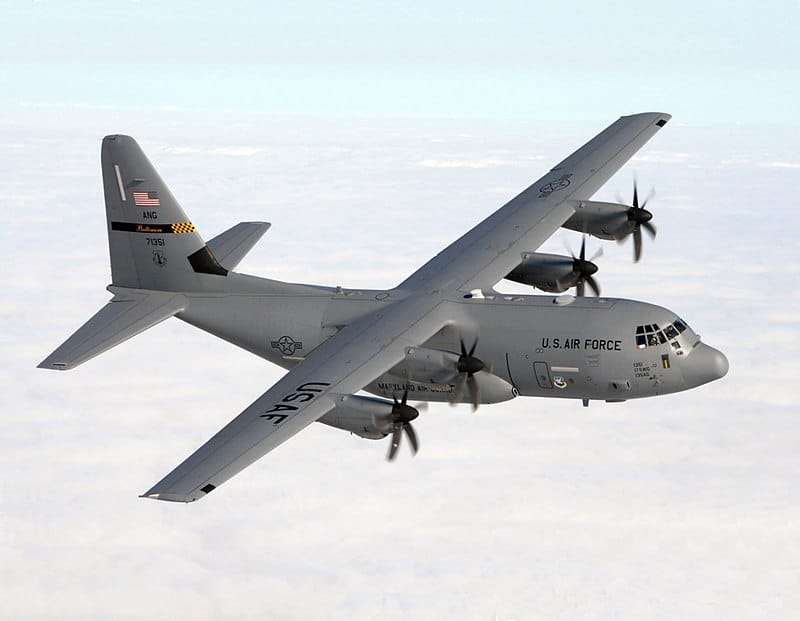Aerospace
Australian Air Force secures US approval for C-130J Super Hercules deal
Australian Air Force secures US approval for C-130J Super Hercules deal

The US government has given the Royal Australian Air Force (RAAF) the go-ahead to proceed with the acquisition of four-engine turboprop military transport aircraft made in the US by Lockheed Martin (C-130J).
A former U.S. fighter pilot who worked in China arrested in Australia(Opens in a new browser tab)
The potential sale of 24 C-130Js equipped with Rolls-Royce AE-2100D turboprops was approved by the US Defense Security Cooperation Agency (DSCA). The deal, which is expected to cost $6.35 billion, also includes rated spare and repair parts, consumables and accessories, personnel training equipment, and other military software.
The new military aircraft will replace the RAAF’s current fleet of 12 Lockheed Martin C-130 Hercules, which have an average age of 23 years in service. The proposed sale, according to the DSCA, will support US foreign policy and national security goals while enhancing Australia’s defence capabilities. The “basic military balance” in Australia or the neighbourhood won’t be changed, though.
The goals of the United States’ national security and foreign policy will be supported by this proposed sale. An essential ally of ours in the Western Pacific is Australia. This political and economic power’s advantageous location makes a significant contribution to the maintenance of regional stability and peace. Helping our ally build and maintain a potent and ready self-defense capability is crucial to the national interest of the United States.
The Royal Australian Air Force (RAAF) will receive replacements for its outdated cargo fleet as a result of the proposed sale, which will also enable the RAAF to enhance its overall operational capability and guarantee a reliable airlift capability.

Aerospace
Boeing Transfers Rocket Stage to NASA, Paving Way for Human Moon Mission

Boeing has achieved a significant milestone by providing NASA with the second core stage of the Space Launch System (SLS) rocket.
This crucial component, crafted at NASA’s Michoud Assembly Facility (MAF), is set to propel the Artemis II crew into lunar orbit, marking humanity’s return to deep space after a 50-year hiatus.
The monumental Boeing-built rocket stage, the largest element of the Artemis II mission, will embark on a journey aboard the Pegasus barge, traveling 900 miles to NASA’s Kennedy Space Center.
Comparison of two legendary aircraft B777x vs B747 aircraft:Click here
Upon arrival, it will be meticulously integrated with other essential Artemis II components, including the upper stage, solid rocket boosters, and NASA’s Orion spacecraft within the iconic Vehicle Assembly Building. This intricate integration process is a vital step toward the eagerly anticipated Artemis II launch, slated for 2025.
“Boeing-built products helped land humankind on the moon in 1969, and we’re proud to continue that legacy through the Artemis generation,” remarked Dave Dutcher, vice president and program manager for Boeing’s SLS program. “Together, with NASA and our industry partners and suppliers, we are building the world’s most capable rocket and paving the way to deep space through America’s rocket factory in New Orleans.”
NASA, Lockheed Martin Reveal X-59 Quiet Supersonic Aircraft:Click here
The delivery of Core Stage 2 marks a significant achievement in the evolution of the SLS rocket. Towering over 200 feet and powered by four RS-25 engines, this core stage, coupled with two solid-fueled booster rockets, will generate a staggering 8.8 million pounds of thrust. This immense power is crucial to launching Artemis II and future missions into the vast expanse of space.
The SLS rocket stands unparalleled in its capability to transport both crew and substantial cargo to the moon and beyond in a single launch. Its extraordinary capacity will facilitate the delivery of human-rated spacecraft, habitats, and scientific missions to destinations including the moon and Mars, ushering in a new era of space exploration.
-

 Travel1 week ago
Travel1 week agoAir India to Expand US Operations with Three New Routes After a Decade
-

 Travel2 weeks ago
Travel2 weeks agoWhy We Should Avoid These Stamps in a Passport
-

 Airlines1 month ago
Airlines1 month agoInvestigations Reveal Fake Chinese Titanium in Boeing and Airbus Jets
-

 Tech4 weeks ago
Tech4 weeks agoChina’s CATL Plans 1,800-Mile Electric Plane Launch by 2027
-

 Airport3 days ago
Airport3 days agoTop 10 Largest Airports in the World by Size
-

 Aerospace4 weeks ago
Aerospace4 weeks agoChina’s Fighter Jets Turn Wings into Autonomous Drones
-

 Airlines4 days ago
Airlines4 days agoAir India Rolls Out A350s for Delhi-New York JFK and Newark Routes
-

 Defence3 weeks ago
Defence3 weeks agoBoeing Enhances Chinook with New Engines and Block II Upgrades at $96 Million







